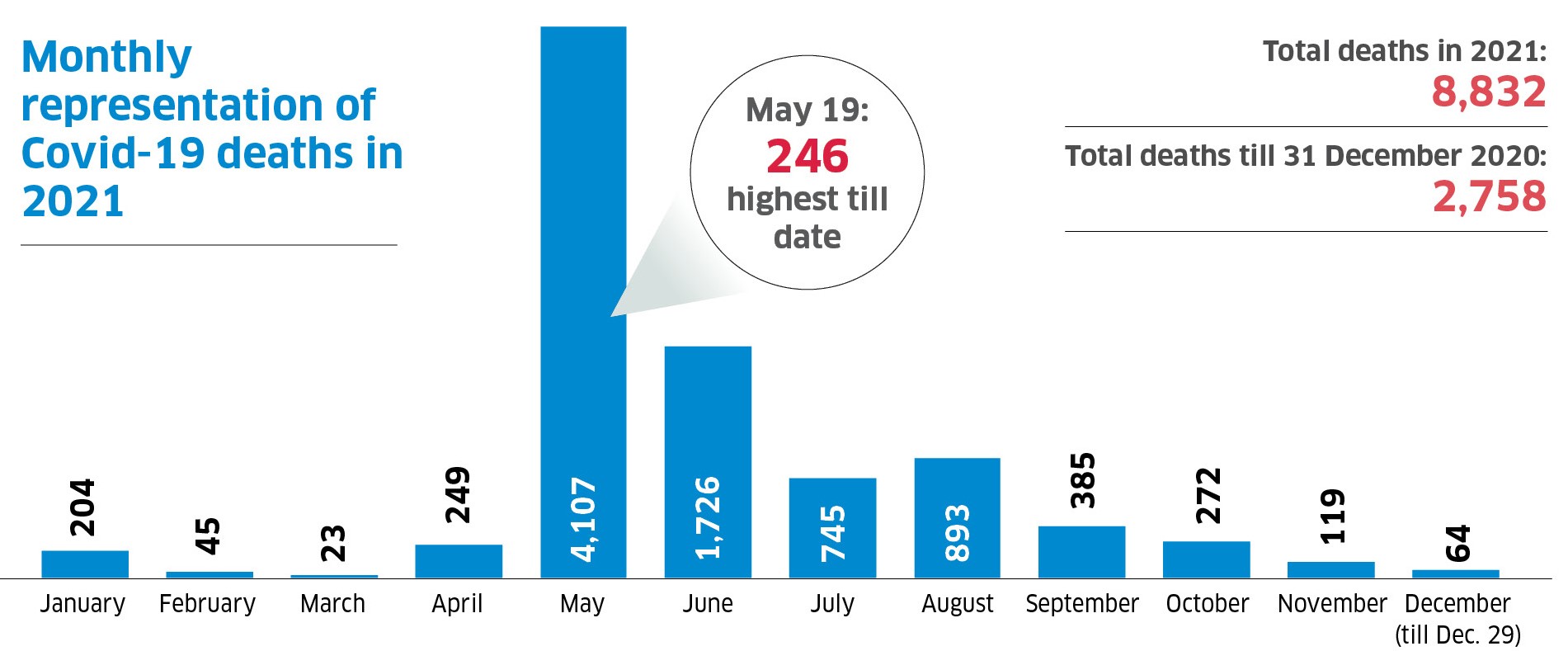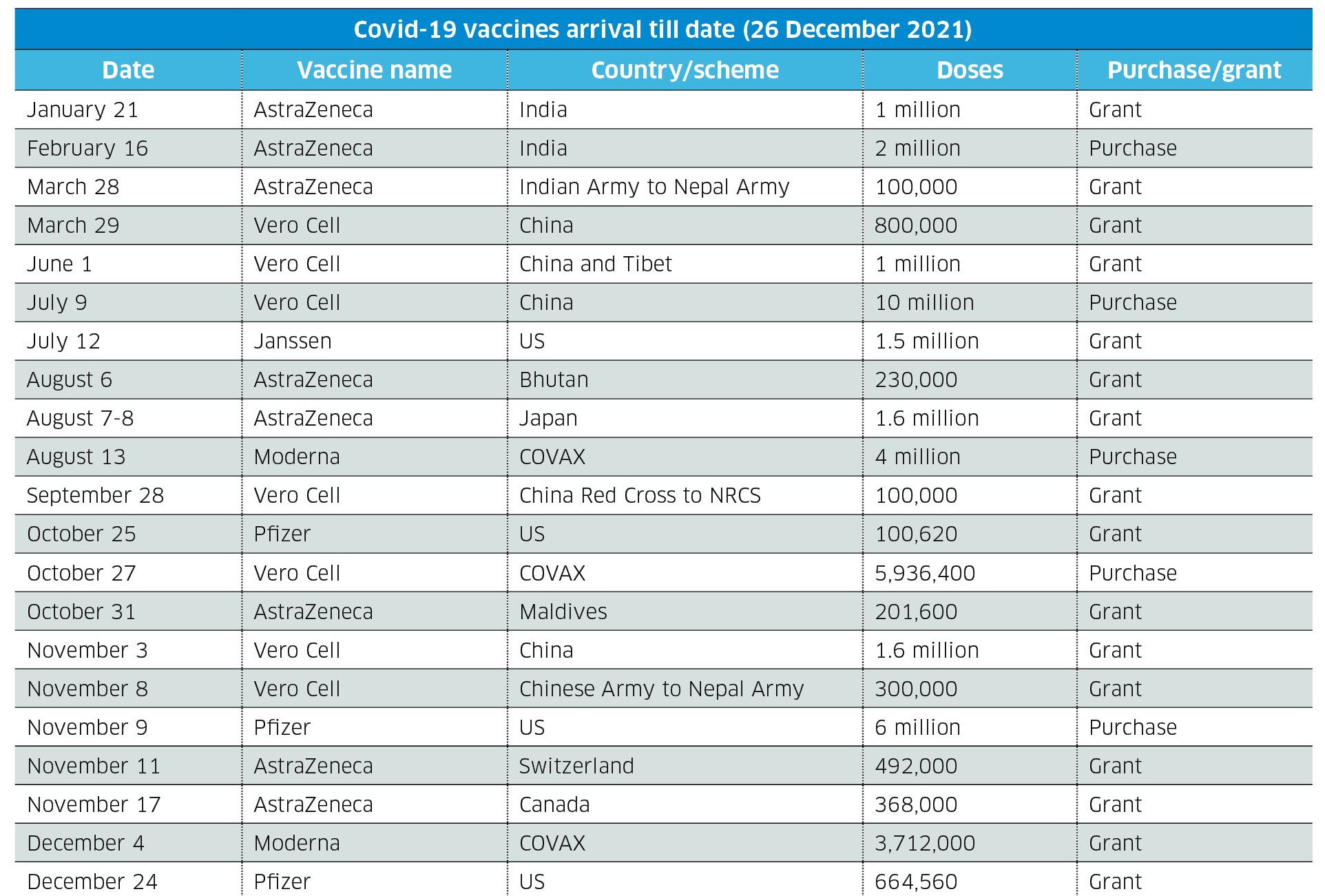The year 2021, in a way, represents another ‘lost year’ for Nepal as all sectors continued to be deeply affected by the Covid-19 pandemic, even though there was a slight reprieve at the year’s end. As soon as the second wave hit in late April, the government, in collaboration with District Administrative Offices, imposed prohibitory orders, with varying levels of restrictions in different districts. From July, the lockdowns were gradually lifted as covid cases declined.
Due to the constant political turmoil, the Ministry of Health and Population had five different ministers in 2021. This also led to a frequent change of officials at health institutions and major hospitals, adding to the difficulties of pandemic-control.
The larger number of daily new cases and lower number of recoveries in May caused an acute shortage of oxygen cylinders, hospital beds, ventilators, ICUs, and other medical supplies. The death rate also spiked, with around 4,000 dying in the month alone. As the second wave’s effects declined, recovery rates, compared to new cases, increased, resulting in only two percent active cases (at the moment).

The first-ever set of covid vaccines came to Nepal on 21 January 2021, and people got their first jabs on January 27. The first delivery included a million doses of Oxford-AstraZeneca vaccines provided by India as a grant, while Nepal agreed with Serum Institute of India to buy another two million doses of the same vaccine. But the company later refused to provide the jabs, depriving almost two million people of timely second doses.
Under various vaccine campaigns across the nation, Nepal approved six types of covid vaccines but only four of them—AstraZeneca (India, Japan, Europe), Vero Cell (China), Janssen (US), and Pfizer (US)—are now being used. As of now, over 35 percent of the population of Nepal is fully vaccinated. On November 14, Nepal rolled out Pfizer to children over 12 who also is the first country in the Asia-Pacific region to give covid vaccines to refugees.

Lately, a new corona variant—Omicron—has been detected. Nepal has so far confirmed three cases of this variant—the first two on December 6 and the third on December 22. The effect of vaccination on this variant is as yet largely unknown. Moreover, a final decision on giving booster doses to the fully-vaccinated population is yet to be taken.
“The year of learning”
Dr Sangita Kaushal Mishra
Spokesperson, Ministry of Health and Population
The Delta variant was not kind to us, yet we have learned many things from this unpleasant covid journey. Everyone knows the areas in which we as a country fell behind, but here I want to focus on the positives.
The year 2021 made us prepared for the next wave—whenever it hits. We have much better medical equipment like ICUs, ventilators, oxygen plants, etc, even at the local level.

The death of over 8,000 people is something no one wanted. The general public, after the second wave, has been aware of the risks. So there has been a collective effort to minimize the pandemic’s effects. Vaccination started right from the start of 2021 and there has been good progress throughout the year. Even if the Omicron variant has now been detected, we are still, by and large, coping with the Delta variant.
Summing up, 2021 had both positives and negatives but most of all, it was a year of learning for all involved in Nepal’s health sector.












